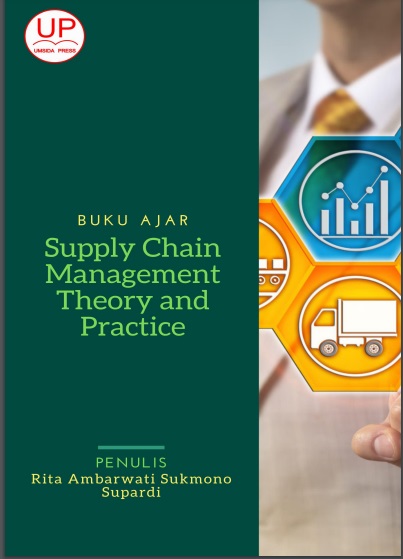Buku Ajar Supply Chain Management Theory and Practice
DOI:
https://doi.org/10.21070/2021/978-623-6292-18-1Keywords:
Supply Chain, Management Theory, PracticeAbstract
Dalam revolusi industri 4.0 perusahaan harus beralih dari sistem manual ke sistem otomatisasi, tenaga kerja profesional serta teknologi 3D printing. Dengan perkembangan teknologi setiap perusahaan berupaya untuk selalu berinovasi agar mampu bersaing di pasar global. Demikian juga pengetahuan dan Skill tenaga kerja harus mengikuti perkembangan di era revolusi industri ini. Perusahaan perlu memikirkan aset berwujud dan tidak berwujud dalam menghadapi perkembangan teknologi dan persaingan global. Aset tak berwujud merupakan pengetahuan dan Skill tenaga kerja yang dimiliki perusahaan dapat menghasilkan manfaat ekonomi di masa depan. (Stewart, 1997; dalam Chayati dan Kurniasih, 2015). Menurut International Federation of Accountant (IFAC) (1998), terdapat tiga jenis intellectual capital yaitu: 1) Organizational capital, 2) Relational capital, dan 3) Human capital.
Downloads
References
Akkermans, H., P. Bogerd, and B. Vos. 1999. “Virtuous and Vicius Cycles on The Road Towards International Supply Chain Management.” International Journal of Operations and Production Management 19(5/6):565–81.
Arnold, U. 1999. “Organization of Global Sourcing: Ways Towards an Optimal Degree of Centralizations.” European Journal of Purchasing and Supply Management 5 3(4):167–74.
Chen, I. J., and A. Pauraj. 2004. “Towards a Theory of Supply Chain Management: The Constructs and Measurements.” Journal of Operations Management 22(2):119–50.
Davis, T. 1993. “Effective Supply Chain Management.” Sloan Management Review, Summer, 35–46.
Eng, T. Y. 2004. The Role of E-Marketplaces in Supply Chain Management. Industrial Marketing Management.
Fisher, M. L. 1997. What Is The Right Supply Chain for Your Product? Harvard Business Review March/ April.
Lambert, D. M., M. C. Cooper, and J. D. Pagh. 1998. “Supply Chain Management: Implementation Issues and Research Opportunities.” International Journal of Logistics Management 9(2):1-19.
Lee, H. L. 2002. “Aligning Supply Chain Strtegies With Product Uncertainties.” California Management Review 44(3):105–19.
Lee, H. L. 2004. The Triple-A Supply Chain. Harvard Business Review.
Lee, H. L., and C. Billington. 1992. Managing Supply Chain Inventory: Pitfall and Opportunities. Spring.
Magretta, J. 1998. Fast, Global, and Entrepreneuraial: Supply Chain Management, Hong Kong Style. Harvard Business Review, Sept-Oct.
Melnyk, Steven A., Douglas M Stewart, and Morgan Swink. 2004. “Metrics and Performance Measurement in Operasions Management Dealing with the Metrics Maze.” Journal of Operations Management 22(3):209–17.
Mentzer, J. T., W. DeWitt, J. S. Keebler, S. Min, N. W. Nix, C. D. Smith, and Z. G. Zacharia. 2001. “Defining Supply Chain Management.” Journal of Business Logistics 22(2):1–25.
Muffatto, M., and A. Payaro. 2004. “Implementation of E-Procurement and e-Fulfillment Process: A Comparison of Cases in The Motorcycle Industry.” Journal of Production Economics International 89(3):339–51.
Pujawan, I. Nyoman. 2017. Supply Chain Management. 3rd ed. Yogyakarta: Guna Widya.
Summak, M. Semih, Mustafa Samancioğlu, and Murat Bağlibel. 2010. “Technology Integration and Assesment in Educational Settings.” Procedia-Social and Behavioral Sciences 2(2):1725–29.

Downloads
Published
How to Cite
License
Authors retain copyright and grant the Umsida Press right of first publication with the work simultaneously licensed under a Creative Commons Attribution 4.0 International License that allows others to share the work with an acknowledgement of the work's authorship and initial publication in this platform.

